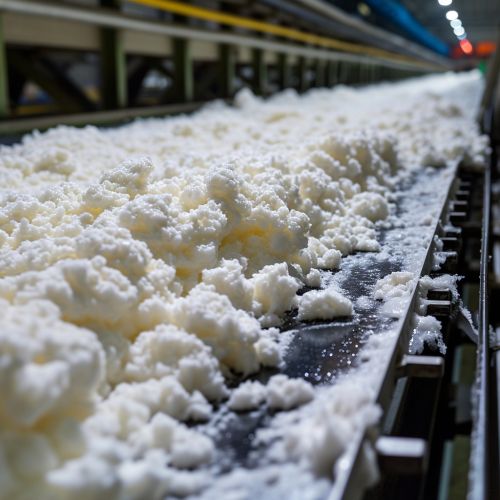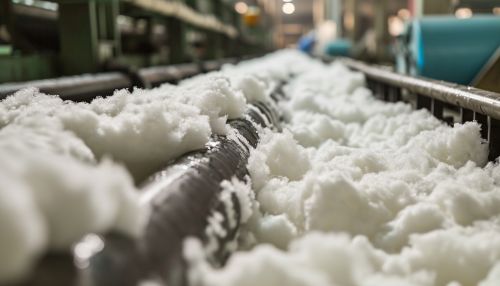Polyurethane foam
Introduction
Polyurethane foam is a versatile material that is widely used in a variety of applications due to its unique properties. It is a type of polymer that is synthesized by reacting a polyol with a diisocyanate in the presence of suitable catalysts and additives. The foam is characterized by its lightweight, insulating properties, and ability to conform to various shapes, making it an ideal material for a range of industries.
Composition and Synthesis
Polyurethane foam is composed of two main ingredients: a polyol and a diisocyanate. The polyol, a type of polyether or polyester, is a long-chain molecule with multiple hydroxyl groups. The diisocyanate, on the other hand, is a highly reactive compound with two isocyanate groups. The reaction between the polyol and diisocyanate, known as polymerization, results in the formation of urethane links and the release of carbon dioxide gas. This gas gets trapped within the polymer matrix, creating a foam structure.


Types of Polyurethane Foam
There are two main types of polyurethane foam: flexible and rigid.
Flexible Polyurethane Foam
Flexible polyurethane foam is soft and elastic, making it ideal for cushioning applications. It is commonly used in furniture, bedding, and automotive seating. This type of foam is produced by incorporating more polyol into the reaction mixture, which results in a higher density of open cells within the foam structure.
Rigid Polyurethane Foam
Rigid polyurethane foam is hard and insulating, making it suitable for thermal insulation in buildings and appliances. It is also used in the production of lightweight, high-strength composites for the aerospace and automotive industries. Rigid foam is produced by incorporating more diisocyanate into the reaction mixture, resulting in a higher density of closed cells within the foam structure.
Properties and Characteristics
Polyurethane foam exhibits a range of properties that make it a versatile material for various applications. These properties include:
Lightweight
Due to its cellular structure, polyurethane foam is lightweight, making it ideal for applications where weight reduction is critical, such as in the aerospace and automotive industries.
Insulating
Polyurethane foam has excellent thermal and acoustic insulation properties. This is due to the trapped gas within the foam's cells, which reduces heat transfer and sound transmission.
Durable
Polyurethane foam is resistant to aging, weathering, and a variety of chemicals. This makes it a durable material for long-term applications.
Conformable
Polyurethane foam can be molded into various shapes and sizes, making it a flexible material for custom applications.
Applications
Due to its unique properties, polyurethane foam is used in a wide range of industries and applications.
Furniture and Bedding
Flexible polyurethane foam is commonly used in the production of furniture and bedding. It provides comfort and support in mattresses, cushions, and upholstery.
Building and Construction
Rigid polyurethane foam is widely used in the building and construction industry for thermal insulation. It is used in wall and roof insulation, insulated doors and windows, and structural insulated panels.
Automotive
Polyurethane foam is used in various automotive applications, including seating, insulation, and lightweight composites.
Aerospace
In the aerospace industry, polyurethane foam is used in the production of lightweight, high-strength composites for aircraft structures.
Environmental Impact and Recycling
Like all polymers, polyurethane foam has an environmental impact. It is non-biodegradable and can take hundreds of years to decompose in the environment. However, efforts are being made to recycle and reuse polyurethane foam to reduce its environmental impact. Various methods of recycling, including mechanical recycling, chemical recycling, and energy recovery, are being explored and implemented.
